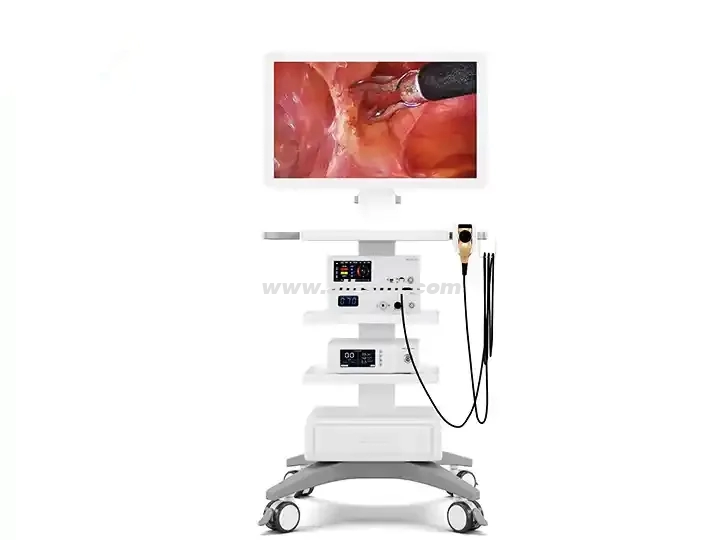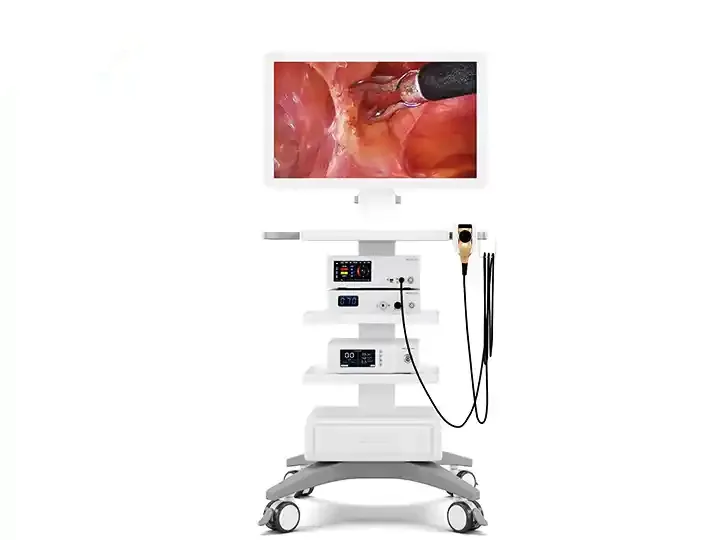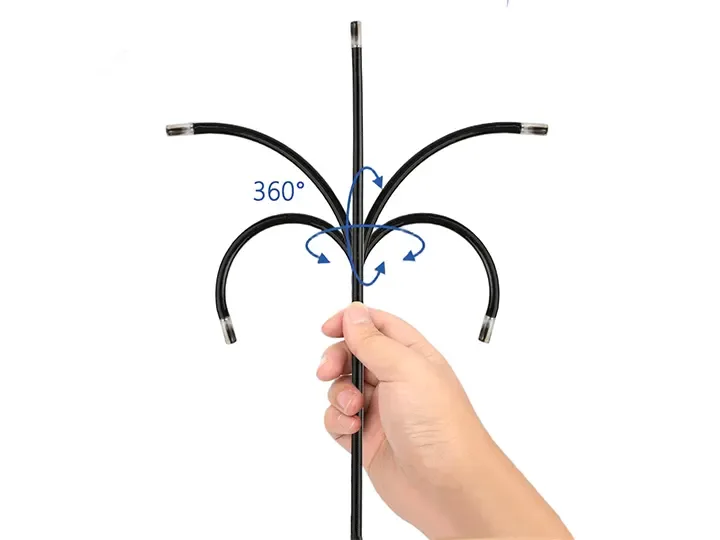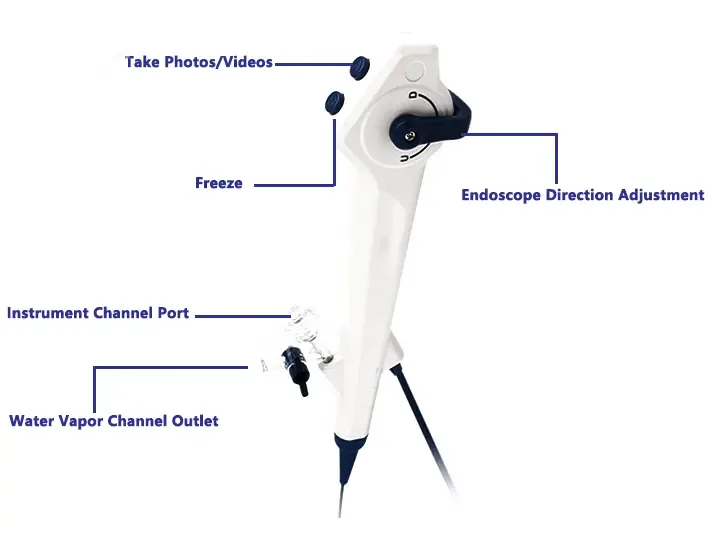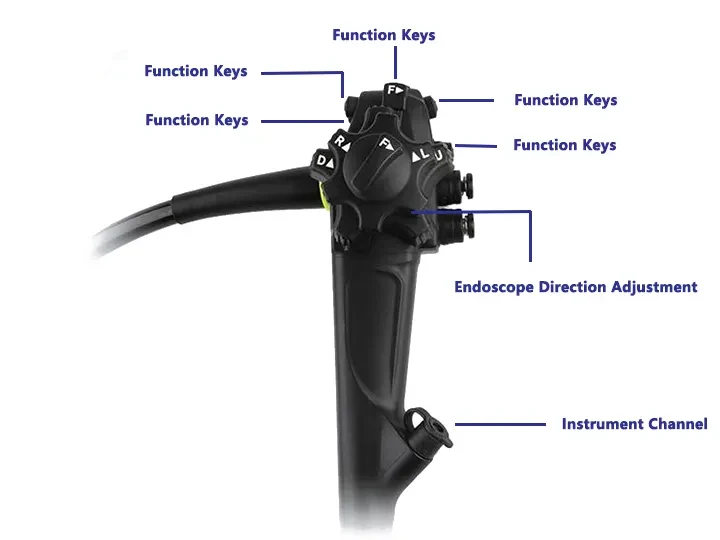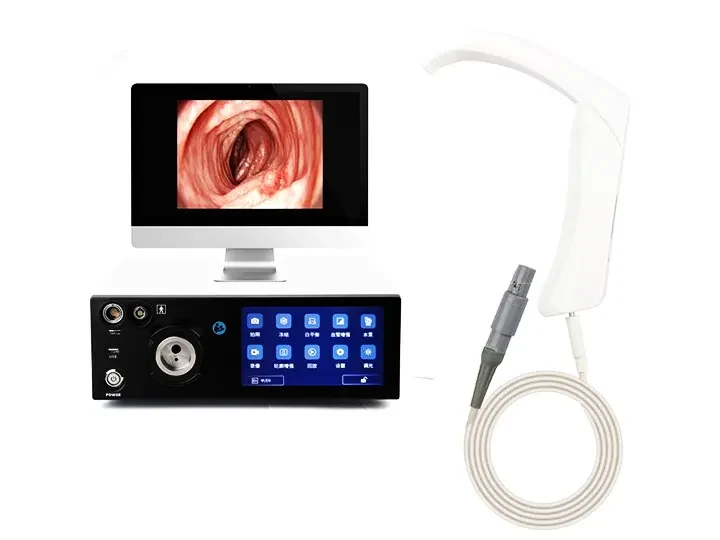4K medical endoscopes are advanced technology equipment used in minimally invasive surgery and diagnosis in recent years. Their core function is to improve the accuracy and safety of medical operations through ultra-high-definition imaging. The following is a brief introduction to their main functions and features:
1. Ultra-high-definition imaging (4K resolution)
3840×2160 pixel resolution: provides 4 times the details of traditional full HD (1080p), clearly showing tissue texture, vascular distribution and tiny lesions.
Wider color gamut and high dynamic range (HDR): Enhanced color reproduction ability, distinguishing tissues of similar tones (such as tumors and normal tissues), and reducing misjudgment.
2. Enhanced surgical accuracy
Magnification function: supports optical or digital magnification, and the surgical field can be partially magnified to observe subtle structures (such as nerves and tiny tumors).
Low-latency transmission: Real-time image transmission delay is extremely low (usually <0.1 seconds), ensuring synchronization of surgical actions.
3. Three-dimensional stereoscopic vision (some high-end models)
Dual-lens system: provides depth of field information through binocular imaging to help doctors judge anatomical levels (such as avoiding blood vessels in thoracoscopic surgery).
4. Multimodal imaging integration
Fluorescence imaging (such as ICG fluorescence): marking lymph, blood flow or tumor boundaries, assisting radical tumor resection.
Narrow-band imaging (NBI): highlighting mucosal surface blood vessels, early detection of cancer (such as early gastrointestinal cancer screening).
5. Intelligent assistance
AI real-time analysis: some devices integrate AI algorithms, which can automatically mark lesions, measure sizes or warn of risk areas (such as bleeding points).
Image recording and sharing: support 4K video recording for teaching, remote consultation or postoperative review.
6. Ergonomic design
Lightweight mirror body: reduce doctor's operating fatigue, some models can rotate 360° to adapt to complex surgical fields.
Anti-fog and anti-fouling coating: avoid intraoperative lens contamination and reduce the number of wiping times.
7. Application scenarios
Surgery: minimally invasive surgery such as laparoscopy, thoracoscopy, and arthroscopy.
Internal medicine: diagnosis and treatment such as gastroenteroscopy and bronchoscopy (such as polypectomy).
Specialties: Urology, gynecology, otolaryngology and other delicate operations.
Advantages summary
Earlier diagnosis: identification of millimeter-level lesions.
Safer surgery: less accidental injury to nerves/blood vessels.
Shortened learning curve: clear images help novice doctors train.
4K endoscopes are gradually becoming standard equipment in high-end medical institutions, especially in tumor resection and complex anatomical structure surgery, but their cost is high and they need to be used with professional 4K display systems. In the future, they may be further integrated with 5G, VR and other technologies.
